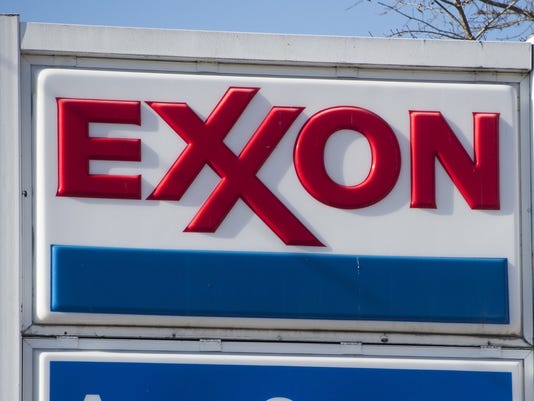Exxon is black on oil

Exxon documents reveal more pessimistic outlook for oil prices, according to the Wall Street Journal
Exxon Mobil lowered its oil price outlook for much of the next decade, according to internal company documents reviewed by the Wall Street Journal .
As part of an internal financial planning process conducted this fall, Exxon reduced its expectations for future oil prices for each of the next seven years from 11% to 17%, according to the documents.
The notable reduction suggests that the Texan oil giant expects the fallout from the coronavirus pandemic to last for much of the next decade. The fossil fuel industry also faces increasing competition from renewable energy sources and electric vehicles, as well as the prospect of greater regulation of climate change around the world.
Unlike some competitors, Exxon does not publish its internal views on commodity prices, which it considers proprietary. Some investors have pressured Exxon to make them public, arguing that forecasts are key to understanding a company's plans and the future value of its assets.
In 2019, Exxon internally predicted that prices of Brent oil, the global benchmark, would average around $ 62 a barrel for the next five years before rising to $ 72 a barrel in 2026 and 2027, according to documents.
This summer, the company lowered that forecast to between $ 50 and $ 55 a barrel for the next five years, before hitting $ 60 a barrel in 2026 and 2027, according to documents, which date. of September.
Brent oil is currently trading for around $ 47 a barrel after this week's price jump that brought prices back to their highest levels since the spring.
According to an Exxon executive, the new price prediction was used in an early stage of modeling its financial plan, which the company's board of directors decided to vote on this month. A spokesperson for Exxon declined to say what its current price predictions are, saying the company uses a range of pricing to develop its business plans.
Years of lower oil prices threaten to put further financial pressure on Exxon, which posted three consecutive quarterly losses for the first time on record this year, and before the pandemic was in the midst of a $ 230 billion spending plan. dollars to pump an additional 1 million barrels of oil and natural gas per day by 2025.
Although Exxon does not disclose its predictions, in public statements it has appeared optimistic about the long-term future of the oil industry as it emerges from the pandemic.
In October, the company told investors that current under-investment in oil and gas production will leave the world short of needed fossil fuels in the coming years. In a note posted on Exxon's website in October, CEO Darren Woods called the industry's hardships temporary and said demand for Exxon products will increase in the near future.
“Even taking into account the impact of Covid-19 on short-term demand, the investment case is still clear,” wrote Mr. Woods.
Stephen Littleton, Exxon's head of investor relations, said Exxon values capital investments over a decades-long horizon and that the coronavirus hasn't changed its long-term view. Exxon hasn't canceled any projects due to the pandemic, but has only delayed them, he said.
“The fundamentals haven't changed; the only thing that has changed is the timing, because we know populations and prosperity will increase, ”said Mr. Littleton in an interview.
Exxon is struggling to cover its $ 15 billion a year dividend at current oil prices, borrowing this year to do so. It has kept paying so far, unlike rivals including Royal Dutch Shell PLC and BP PLC, who cut their dividends amid this year's liquidity crisis.
The company cut $ 10 billion in capital spending after the pandemic and said it could lay off up to 15 percent of its global workforce, for a total of about 14,000 jobs, including contract employees. Exxon also said it will reduce its capital budget to between $ 16 and $ 19 billion next year.
Even with these cuts, Exxon would need an oil price of between $ 55 and $ 65 a barrel in 2021 to cover capital expenditures and dividends, according to estimates by various analysts.
Shell publicly lowered its price forecast in June, predicting that Brent oil would hit $ 50 a barrel in 2022 before hitting a long-term price of $ 60. Following that review, it said it would devalue some oil and gas assets by as much as $ 22 billion. BP also cut its price forecasts and devalued billions of assets.
Exxon said in October that it could have devalued the value of valued natural gas assets by up to $ 30 billion, but said this does not indicate changes in its long-term price predictions. In recent decades, the company has rarely devalued the value of assets. For years, executives have argued that the company is extremely conservative in its investment decisions, choosing projects that work financially in any commodity pricing environment.
(Extract from the press review of Eprcomunicazione )
This is a machine translation from Italian language of a post published on Start Magazine at the URL https://www.startmag.it/energia/exxon-petrolio-prezzi/ on Mon, 30 Nov 2020 06:46:31 +0000.
